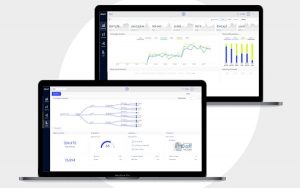Google has created a resource that shows marketers how to get the most out of YouTube search. It isn’t rocket science, but we think everyone should take note.
Google owns YouTube and it has proven to be an amazingly successful purchase. There is still only one real video sharing platform online, and YouTube is beloved by pretty much every single demographic out there. So it’s important to be a part of if you are a marketer. That’s why it’s been particularly intriguing to see that Google has released some information on how YouTube actually works.
It’s released some details on how YouTube search works, which could be very useful for any social media marketer that is using video effectively, and wants to take it to the next level.
So how does it work?
YouTube has outlined a number of ways in which users and marketers can get the most out of the platform, but search is such an important aspect of the experience it’s no surprise to see that it has devoted a large section of advice on how people find videos.
It won’t come as that much of a surprise to learn that much of the search algorithm for YouTube is mirrored by the algorithm on Google itself, the world’s most popular search engine. The brand wouldn’t tinker with a successful formula. However, it is still worthwhile to take the key information that Google offers, because if Google are actually telling us what it takes to be found on search, and they’re telling us directly, as marketers we would be foolish to ignore the information.
It’s important to remember that 500 hours of content is uploaded to YouTube every minute. This means that, if YouTube is going to be able to ensure search actually works, and that people find the videos they want to see, it will have to be a very fast, efficient algorithm.
Relevance, engagement and quality are the three areas in which YouTube focuses on when organising search. That means the 500 hours every minute is quickly assessed and filed according to those three parameters. The big one is most likely relevance, because it makes sense that YouTube would only ever show you video suggestions that had something to do with what you identified in the search query.
Relevance is not something that YouTube is incredibly open about, however. It isn’t diving deep and completely explaining how it works out whether or not the video suggestions it shows you are ‘relevant’ to what you are looking for. The details only come up with the phrase ‘many factors’ when it mentions how relevance is determined.
However, YouTube does say that the title tags, description and video content are the key areas in which relevance will pop up in search. So for marketers, tags are key, as is content itself. Make the mistake of not creating content that matches what your audience wants and you won’t get very far.
Engagement is exactly what you think it is. If a user watches a video through to the end, and that video is relevant to your query, that engagement will help you get pushed to the front of the queue. The more a person engages with a video, the more likely it is going to be shared with other users by YouTube itself as part of a search query.
Quality is the final part of the equation. Here, creators need to build content that is well made, has usefulness built in, and also shows real authority on a subject. While this may not be that relevant with a video by one of the many social ‘dare’ creators (such as Carter Sharer), people will be given suggestions that have become established in their genre.
Up Next
This is the Holy Grail. When someone watches a video on the channel, a little ‘up next’ box often appears. These are literally recommendations from YouTube, and for that reason are well worth understanding. If marketers want their video to come up on ‘up next’, they will have to be on top of their metrics and have a clear understanding of their audiences, because YouTube looks at the following when recommending:
- Watch and search history
- Subscriptions
- Time Of day
- Location
- Surveys
These are all about knowing your audience and making sure that they watch more of what you create, and more often.
No surprises really on what YouTube values for search. But it is important to be able to follow advice from the source of the content. Every marketer should take more note of what YouTube wants to see.
Remember, that’s 500 hours a minute.
If you are in charge of social media, and want some great metrics to work with, try Locowise. We will even give you a week free.
Digital & Social Articles on Business 2 Community
(21)







